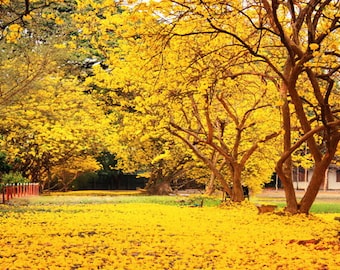Quote:
Originally Posted by TCC

An interesting example of the perils of using common names for plants. Wikipedia lists no less than 29 different trees (representing 26 different genera), the wood from which bears the common name "ironwood". 23 of these actually have the word "ironwood" in the trees' names.
Rattlesnake Gal's American hophornbeam ( Ostrya virginiana) is in a totally different genus from the American hornbeam ( Carpinus caroliniana) found in southern New Hampshire. Both are commonly referred to as "ironwood". Ishoot308's "ipe" comprises the entire genus Tabebuia, which is native to Central and South America.  |
Now Rattlesnake Gal's thread has me wondering if I correctly identified the falling yellow catkins I previously wrote were from a
Black Birch.

Black Birch is heavy, and, like HopHornbeam, also sinks in water. The leaves are very similar, so now I have to wander off into my woods to check the bark.

Yes, to the proliferation of "Ironwood" as a common name. I've planted a few "Ironwood" in Florida—donated free by the power company to shade two-story houses from intense afternoon sun. (Florida's native "Ironwood" grows straight and tall).

As to
Tabebuia, it's been widely transplanted to Southern Florida. I don't know of a more
spectacular flowering tree.

Even as it drops its flowers,
Tabebuia brightens the ground where they fall:


Q: When is best time to plant a tree?
A: Twenty years ago.
.